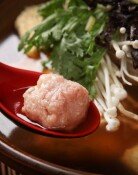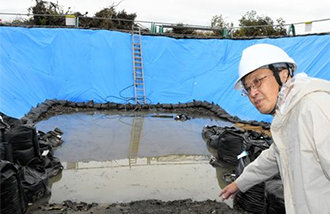Goryeo Porcelain Gains Worldwide Fame
Gangjin in South Jeolla Province, a popular southern Korea tourist destination, is the home of the countrys celadon porcelain industry.
Eighty percent of all the national treasure-grade celadon discovered up until now has been found in Gangjin. Gangjin also is home to 188 out of the countrys 400 old-style pottery kilns.
Gangjins abundant kaolin and firewood, its hillsides with inclines of 45 degrees that are good for making kilns, and its warm sea breezes make the town the best place in Korea to produce celadon porcelain.
About 1.5 million people visit Gangjin every year to attend its porcelain festival. An exhibition promoting Goryeo porcelain will be held in Paris, France next month, so people will begin to mention Goryeo celadon among the worlds most famous ceramic items.
Touring the world-
Gangjin County will hold a porcelain exhibition and an international symposium at the headquarters of UNESCO in Paris from April 3 to 14.
This will be the first time that a Korean local government holds an exhibit at UNESCO headquarters. In the event under the theme of Into the millennia-old mystery of porcelain, Gangjin government plans to display 11 pieces of reproduced Goryeo celadon (which are all national treasures).
It will also show the sceneries of Gangjin in four beautiful seasons, and how Goryeo celadon is produced and reproduced through images and graphics.
The exhibition was decided to be held after county head Hwang Joo-hong asked a UNESCO official to give Gangjin an opportunity to promote the excellence of Gangjin porcelain last July when he visited Limoges, France, to discuss establishment of sisterhood between the two towns.
Prior to the opening of the exhibition, an international symposium aimed at finding ways to build on Gangjins historical cultural assets like Goryeo celadon, Jeong Yak-yongs Shilhak (practical learning) ideology and national spirit ideology of Kim Yoon-sik will be held. The theme of the event will be Prosperity and Harmony.
Gangjin County expects the two events to significantly help Gangjin kiln (national historical monument no. 68) to be registered as the world heritage. It was put on the tentative list of world heritage in 1994.
Professor Seo Kyeong-seok of Chosun University (School of Design) said, It is important to reproduce traditional works that are bright, roaring jade green as well as make a variety of products, targeting the worlds tens of trillions of won worth tableware market.
Competitive edge of Gangjin porcelain-
Gangjin Porcelain Factory, established in 1978, is building on the tradition of Goryeo celadon, which disappeared in the last years of Goryeo Dynasty, as techniques for Goryeo pottery deteriorated.
The factory manufactures more than 20,000 porcelains per year. Twenty-two ceramists undergo 24 steps by hand including forming, engraving, glazing, drying and baking to produce porcelains.
Kilns that use firewood like pines and oaks bake porcelains only four times a year, about 1,000 at the most.
Pots are sold at auction when they are taken out from kilns. Ceramics with clouds and cranes drawn on them or lotus flower-shaped porcelains are priced at over one million won.
Japanese particularly like bowls that are about 300,000 won, so they make a purchase in a group during events. The first event of this year will be held on April 22.
The Porcelain Factory is awfully busy these days, supplying orders of the same celadon as those that were given to heads of state from 21 countries as gift during the APEC summit held in Busan last November.
The porcelain is the reproduced version of the celadon national treasure no. 220. The peonies on the original one were replaced by chrysanthemums. The reproduced set of lid, saucer and vessel is sold for 350,000 won.
We stopped accepting additional orders as we already have 1,000 sets to make, said head of Porcelain Factory Park Jae-ryong. I guess we will be able to supply all of our orders by June even at the fastest pace.
Seung-Ho Jung shjung@donga.com







